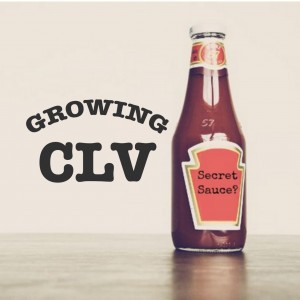Your customers are the most important drivers of growth for your business. They’re often the reason new clients seek you out, and they serve as the source for post-sale opportunities and recurring revenue. It’s the simple truth.
But what’s also true is that in today’s digital age and dynamic business environment, where trust and loyalty isn’t what they used to be, maintaining customer health can be challenging to say the least.
So, what’s the “secret sauce” to staying on top of customer expectations and growing the value of your  installed base?
installed base?
The answer is all in how you manage your customer data. Clean, actionable data intelligence can help you deliver greater value to the customer, create personalized experiences, accelerate revenue and profits, and serve as the primary catalyst for building customer lifetime value (CLV).
The Ultimate Goal: Expanding Customer Relationships
Growing CLV may mean different things to different people, but I think of it first and foremost as improving the end-to-end customer experience. It’s the concept of serving customers well beyond that first deal and addressing the full lifecycle across all customer touch points. Along the way, customer satisfaction is improved, and for any sales organization, there’s no denying that retention is tremendously important. Think about this:
- Cost: Acquiring a new customer is anywhere from 5 to 25 times more expensive than retaining an existing one. (Source: Harvard Business Review )
- Profits: Increasing customer retention by 5% can increase profits by a whopping 25 – 90%. (Source: Harvard Business Review/Bain & Company)
- Value: 82% of companies agree that retention is less costly to execute than new logo acquisition, supporting the idea that ongoing profit from a customer lifetime is higher than any one single transaction. (Source: Forbes)
Your Greatest Limiting Factor: Bad Data
There are many roadblocks to CLV growth, and poor data quality is the top limiting factor today. Disparate data along with outdated, incomplete or inaccurate records can hurt communications, resulting in customer engagement that misses the mark, or sales opportunities that slip through the cracks.
Growing CLV requires that a sales organization effectively manage the data residing in their CRM, ERP, pricing, point of sale, entitlement and other systems. Aggregating and cleansing these disparate data sources to make the information complete and actionable is critical to providing a full 360-degree picture of the customer lifecycle. Enriched, actionable data can enable your team to know precisely who to reach out to and when, with a message or offer that addresses the customer’s specific needs at that point in time.
Any sales strategy that claims to focus on CLV should include initiatives that span the attach, onboarding, adoption, expansion, renewal and technology refresh stages, as well as the second-chance attach phase. Covering all these bases—and doing it well—can be a huge undertaking for resource-strapped sales organizations. But when you combine actionable data with process automation, managing the entire customer lifecycle becomes far less time consuming and costly, and much more effective for everyone involved.
Learn More About Data Management Practices For Improved Customer Lifetime Value
How do you uncover and assemble the quality data you need to grow CLV? Watch the On-Demand Customer Success Talk Webinar: Growing Customer Lifetime Value with Best-in-Class Data Management Practices.
Good points on customizing customer experience with good data.